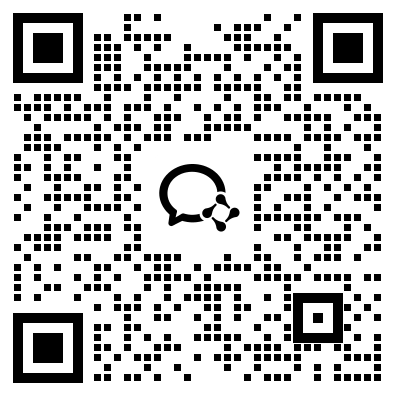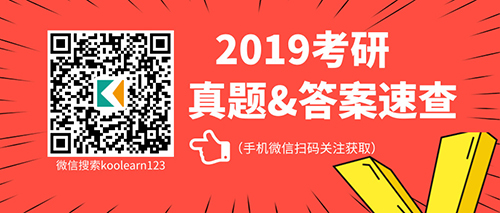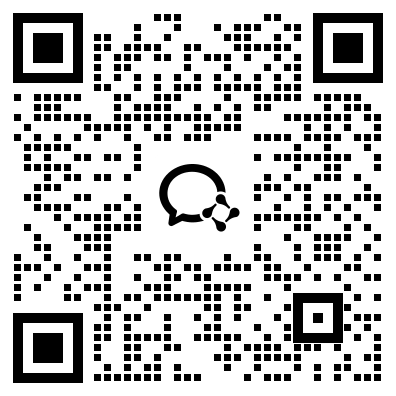特惠-26考研冲刺
特惠-27考研课
双证-在职硕士
免联考-同等学力
复试分数线
26复试全面指导
模拟复试面试
26考研-全套真题
26考研估分
保研-路线图
27考研-智能择校
27考研-英语测评
27考研-新大纲对比
热门-计算机择校

扫码加入训练营
牢记核心词
学习得礼盒
新东方在线考研频道考后发布2019考研英语一翻译真题(新东方在线),多个名师团队深度解析真题变化、分析答案要点,帮助考生做好考后估分、迎战复试调剂! 击领取【2019考研真题解析直播课】,听直播抽大奖!更多2019考研英语真题级答案、考研政治真题及答案、考研数学真题及答案、管理类联考真题及答案、考研专业课真题及答案,请关注【2019考研真题答案及解析】专题!《2020考研新生手册》等你来拿!
| 2019考研真题答案解析大汇总 | |||
| 公共课 | 政治 | 英语一 | 英语二 |
| 数学一 | 数学二 | 数学三 | |
| 公外日语 | |||
| 专业课 | 管理类联考 | 西医综合 | 教育学 |
| 法硕(法学) | 法硕(非法学) | 中医综合 | |
| 计算机 | 历史学 | 心理学 | |
| 经济学 | 金融 | 艺术 | |
| 翻译硕士 | 汉硕 | 二外日语 | |
| 2019考研真题及答案下载【答案这里最全】 | |||
2019考研英语一翻译真题(新东方在线)
It wasn’t until after my retirement that I had the time to read scientific papers in medical journals with anything like close attention. Until then, I had, like most doctors, read the authors’ conclusions and assumed that they bore some necessary relation to what had gone before. I had also naively assumed that the editors had done their job and checked the intellectual coherence and probity of the contents of their journals.
It was only after I started to write a weekly column about the medical journals, and began to read scientific papers from beginning to end, that I realized just how bad — inaccurate, misleading, sloppy, illogical — much of the medical literature, even in the best journals, frequently was. My discovery pleased and reassured me in a way: for it showed me that, even in advancing age, I was still capable of being surprised.
I came to recognize various signs of a bad paper: the kind of paper that purports to show that people who eat more than one kilo of broccoli a week were 1.17 times more likely than those who eat less to suffer late in life from pernicious anaemia. 46) There is a great deal of this kind of nonsense in the medical journals which, when taken up by broadcasters and the lay press, generates both health scares and short-lived dietary enthusiasms.
Why is so much bad science published?
A recent paper, titled ‘The Natural Selection of Bad Science’, published on the Royal Society’s open science website, attempts to answer this intriguing and important question.
According to the authors, the problem is not merely that people do bad science, as they have always done, but that our current system of career advancement positively encourages it. They quote ananonymous researcher who said pithily: ‘Poor methods get results.’ What is important is not truth, let alone importance, but publication, which has become almost an end in itself. There has been a kind of inflationary process at work: 47) nowadays anyone applying for a research post has to have published twice the number of papers that would have been required for the same post only 10 years ago. Never mind the quality, then, count the number. It is at least an objective measure.
In addition to the pressure to publish, there is a preference in journals for positive rather than negative results. To prove that factor a has no effect whatever on outcome b may be important in the sense that it refutes a hypothesis, but it is not half so captivating as that factor a has some marginally positive statistical association with outcome b. It may be an elementary principle of statistics that association is not causation, but in practice everyone forgets it.
The easiest way to generate positive associations is to do bad science, for example by trawling through a whole lot of data without a prior hypothesis. For example, if you took 100 dietary factors and tried to associate them with flat feet, you would find some of them that were associated with that condition, associations so strong that at first sight they would appear not to have arisen by chance.
Once it has been shown that the consumption of, shall we say, red cabbage is associated with flat feet, one of two things can happen: someone will try to reproduce the result, or no one will, in which case it will enter scientific mythology. The penalties for having published results which are not reproducible, and prove before long to be misleading, usually do not cancel out the prestige of having published them in the first place: and therefore it is better, from the career point of view, to publish junk than to publish nothing at all. A long list of publications, all of them valueless, is always impressive.
48)Attempts have been made to (control this inflation命题人改编为curb this kind tendency),(for example by trying, when it comes to career advancement这部分被出题人删除), to incorporate some measure of quality as well as quantity into the assessment of an applicant’s published papers. This is the famed citation index, that is to say the number of times a paper has been quoted elsewhere in the scientific literature, the assumption being that an important paper will be cited more often than one of small account. 49) This would be reasonable enough if it were not for the fact that scientists can easily arrange to cite themselves in their future publications, or get associates to do so for them in return for similar favors.
Boiling down an individual’s output to simple, objective metrics, such as number of publications or journal impacts, entails considerable savings in time, energy and ambiguity. Unfortunately, the long-term costs of using simple quantitative metrics to assess researcher merit are likely to be quite great.
50) If we are serious about ensuring that our science is both meaningful and reproducible, we must ensure that our institutions incentivize that kind of science.
In other words, what we need is more emphasis on personal contact and even nepotism in the way careers are advanced: but tell it not in Gath, publish it not in the streets of Askelon; lest the daughters of the Philistines rejoice…
19考生对答案估分,
20考生看解析做规划,
2019考研真题解析专题报道
2020考研开挂抢跑
聚焦高频考点
手机查答案关注公众服务号

【英语一真题】资料这里有↑↑↑

 资料下载
资料下载
2014年-2025年考研历年真题汇总
发布时间:2024-04-25扫码添加【考研班主任】
即可领取资料包
考研大纲PDF电子版下载-历年(附解析)
发布时间:2024-04-25扫码添加【考研班主任】
即可领取资料包
2026年考研政数英备考资料zip压缩包
发布时间:2024-04-25扫码添加【考研班主任】
即可领取资料包
考研英语大纲词汇5500打印版(基础必备)
发布时间:2024-04-25扫码添加【考研班主任】
即可领取资料包
新东方在线考试模拟题【12套】
发布时间:2024-04-25扫码添加【考研班主任】
即可领取资料包
2026年考研专业课知识点总结
发布时间:2024-04-25扫码添加【考研班主任】
即可领取资料包
新东方考研资料下载地址
发布时间:2023-05-17新东方在线考研资料合集
下载方式:微信扫码,获取网盘链接

目录:
1.2013-2023年近10年政数英真题及解析PDF版(新东方)
2.2013-2023年专业课考试历年真题及解析PDF版
3.24考研复习备考资料大合集:大纲+备考资料+词汇书+考前押题+自命题
资料介绍:
1.2013-2023年近10年政数英真题及解析PDF版(新东方)
 、
、
2.2013-2023年专业课考试历年真题及解析PDF版


3.24考研复习备考资料大合集

3.24考研复习备考资料:考研大纲

3.24考研复习备考资料:政数英备考资料+自命题真题

------------------
考研备考过程中,尤其是专业课部分,参考往年的考试真题,对于我们的复习有更好的帮助。北京大学考研真题资料都有哪些?小编为大家进行了汇总。
北京大学考研真题资料-公共课

北京大学考研真题资料-专业课


以上就是关于“北京大学考研真题资料下载(历年汇总)”的整理,更多考研资料下载,请关注微信获取下载地址。
2024考研公共课必背知识点汇总
发布时间:2023-01-03扫码添加【考研班主任】
即可领取资料包
2013-2023考研历年真题汇总
发布时间:2023-01-03扫码添加【考研班主任】
即可领取资料包
考研英语大纲词汇(PDF可打印)
发布时间:2023-01-03扫码添加【考研班主任】
即可领取资料包
2024考研专业课知识点总结
发布时间:2023-01-03扫码添加【考研班主任】
即可领取资料包
2023考研政治 内部押题 PDF
发布时间:2022-11-16扫码添加【考研班主任】
即可领取资料包
徐涛:23考研预测六套卷
发布时间:2022-11-16扫码添加【考研班主任】
即可领取资料包
考研政数英冲刺资料最新整理
发布时间:2022-11-16扫码添加【考研班主任】
即可领取资料包
23考研答题卡模板打印版
发布时间:2022-11-16扫码添加【考研班主任】
即可领取资料包
2023考研大纲词汇5500PDF电子版
发布时间:2022-07-28扫码添加【考研班主任】
即可领取资料包
考研历年真题(公共课+专业课)
发布时间:2022-07-28扫码添加【考研班主任】
即可领取资料包
考研英语阅读100篇附解析及答案
发布时间:2022-01-07扫码添加【考研班主任】
即可领取资料包
新东方考研学霸笔记整理(打印版)
发布时间:2022-01-07扫码添加【考研班主任】
即可领取资料包
2001-2021年考研英语真题答案(可打印版)
发布时间:2022-01-07扫码添加【考研班主任】
即可领取资料包
考研英语词汇5500(完整版下载)
发布时间:2022-01-07扫码添加【考研班主任】
即可领取资料包
2022考研政审表模板精选10套
发布时间:2022-01-07扫码添加【考研班主任】
即可领取资料包
历年考研真题及答案 下载
发布时间:2021-12-09扫码添加【考研班主任】
即可领取资料包
考研政审表模板汇总
发布时间:2020-06-17扫码添加【考研班主任】
即可领取资料包
近5年考研英语真题汇总
发布时间:2020-06-17扫码添加【考研班主任】
即可领取资料包
考研英语大纲词汇5500
发布时间:2020-06-17扫码添加【考研班主任】
即可领取资料包
2022考研12大学科专业排名汇总
发布时间:2019-11-21扫码添加【考研班主任】
即可领取资料包
2023考研政治复习备考资料【珍藏版】
发布时间:2019-11-21扫码添加【考研班主任】
即可领取资料包
考研英语万能模板+必备词汇+范文
发布时间:2019-11-21扫码添加【考研班主任】
即可领取资料包
考研数学一、二、三历年真题整理
发布时间:2019-11-21扫码添加【考研班主任】
即可领取资料包

添加班主任领资料
添加考研班主任
免费领取考研历年真题等复习干货资料

 推荐阅读
推荐阅读
2025年考研初试结束后,新东方在线为大家整理了:2025年考研英语一真题及答案解析(完整版),供大家参考,同时也为大家提供了电子版文
2025年考研初试结束后,新东方在线为大家整理了:2025年考研英语一真题及答案解析(电子版下载),供大家参考,同时也为大家提供了电子
2025年考研初试结束后,新东方在线为大家整理了:2025年考研英语一新题型真题答案,供大家参考,同时也为大家提供了电子版文档直接下载
2025年考研初试结束后,新东方在线为大家整理了:2025年考研英语一完形填空真题答案,供大家参考,同时也为大家提供了电子版文档直接下
2025年考研初试结束后,新东方在线为大家整理了:2025年考研英语一翻译真题答案,供大家参考,同时也为大家提供了电子版文档直接下载,

 资料下载
资料下载
扫码添加【考研班主任】
即可领取资料包
扫码添加【考研班主任】
即可领取资料包
扫码添加【考研班主任】
即可领取资料包
扫码添加【考研班主任】
即可领取资料包
扫码添加【考研班主任】
即可领取资料包
扫码添加【考研班主任】
即可领取资料包
新东方在线考研资料合集
下载方式:微信扫码,获取网盘链接

目录:
1.2013-2023年近10年政数英真题及解析PDF版(新东方)
2.2013-2023年专业课考试历年真题及解析PDF版
3.24考研复习备考资料大合集:大纲+备考资料+词汇书+考前押题+自命题
资料介绍:
1.2013-2023年近10年政数英真题及解析PDF版(新东方)
 、
、
2.2013-2023年专业课考试历年真题及解析PDF版


3.24考研复习备考资料大合集

3.24考研复习备考资料:考研大纲

3.24考研复习备考资料:政数英备考资料+自命题真题

------------------
考研备考过程中,尤其是专业课部分,参考往年的考试真题,对于我们的复习有更好的帮助。北京大学考研真题资料都有哪些?小编为大家进行了汇总。
北京大学考研真题资料-公共课

北京大学考研真题资料-专业课


以上就是关于“北京大学考研真题资料下载(历年汇总)”的整理,更多考研资料下载,请关注微信获取下载地址。
扫码添加【考研班主任】
即可领取资料包
扫码添加【考研班主任】
即可领取资料包
扫码添加【考研班主任】
即可领取资料包
扫码添加【考研班主任】
即可领取资料包
扫码添加【考研班主任】
即可领取资料包
扫码添加【考研班主任】
即可领取资料包
扫码添加【考研班主任】
即可领取资料包
扫码添加【考研班主任】
即可领取资料包
扫码添加【考研班主任】
即可领取资料包
扫码添加【考研班主任】
即可领取资料包
扫码添加【考研班主任】
即可领取资料包
扫码添加【考研班主任】
即可领取资料包
扫码添加【考研班主任】
即可领取资料包
扫码添加【考研班主任】
即可领取资料包
扫码添加【考研班主任】
即可领取资料包
扫码添加【考研班主任】
即可领取资料包
扫码添加【考研班主任】
即可领取资料包
扫码添加【考研班主任】
即可领取资料包
扫码添加【考研班主任】
即可领取资料包
扫码添加【考研班主任】
即可领取资料包
扫码添加【考研班主任】
即可领取资料包
扫码添加【考研班主任】
即可领取资料包
扫码添加【考研班主任】
即可领取资料包

 阅读排行榜
阅读排行榜
 相关内容
相关内容